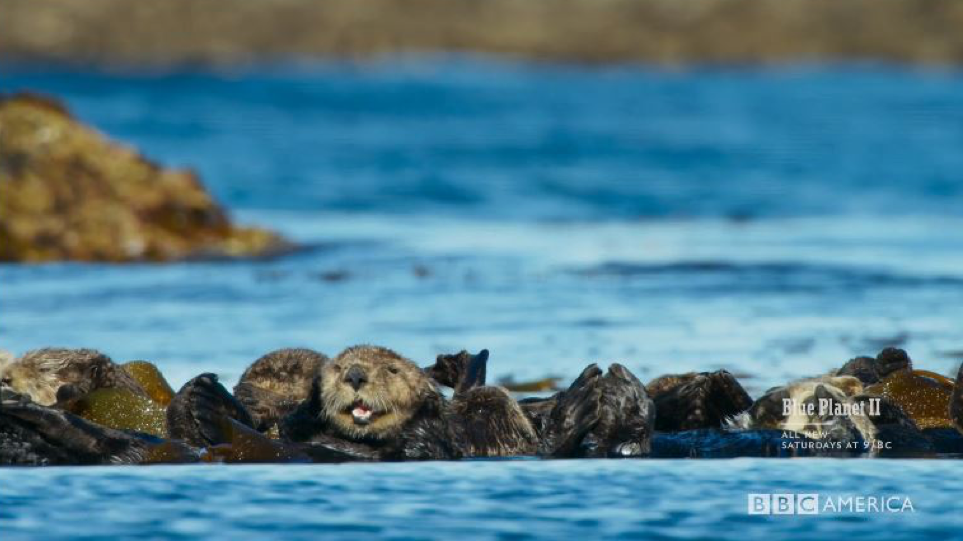Sky of Blue, Seas of Green: Discover What Lives Beneath the Waves (and Among the Kelp)
Published by Ocean Conservancy
In its latest installment, Blue Planet II brings viewers to new underwater ecosystems. “Green Seas” highlights the kelp forests, mangroves and underwater grasslands that provide homes to some unique creatures. Dragon fish dads float through the currents, looking for a safe place to spawn. Giant cuttlefish search for mates. Thousands of spider crabs gather in a pile to shed their shells in safety.
The sheer amount of life in these undersea forests is almost surprising to a science novice like myself. Generally, when I think of where most ocean creatures live, I think of coral reefs. But if coral reef are the tropical rainforests of the seas, then these ecosystems are like underwater deciduous forests—maybe less flashy, but certainly just as lively.
One example of this surprising amount of life comes in the first few minutes of the episode. In the far north, as the weather begins to warm and spring begins, starfish begin to spawn. This mass spawning (and the supply of food that comes with it) spurs on life from all corners of the sea. Sea cucumbers emerge and use ten arms to grab onto the starfish eggs as they float on by. The time lapse footage is somewhat unsettling: a plant-like creature suddenly has arms that are grabbing onto food as quickly as possible. I’m reminded of what I must look like when you put a bag of chips in front of me.


The sea cucumbers aren’t the only creatures that benefit from the seasonal rises in ocean temperatures. Fronds of kelp begin to rise towards the surface, propelled by the sunlight. What was once seemingly barren terrain becomes an ocean forest teeming with life. It’s a reminder that these aquatic ecosystems are delicate, and that the smallest changes in temperature or climate can have a big impact.
In the four years it took to film Blue Planet II, filmmakers captured behaviors of aquatic animals that had never been filmed before. In this episode, an octopus is chased by a shark. When it seems the octopus has no place left to go, she takes matters into her own tentacles. She hides itself in plain sight by covering herself in shells, confusing the shark and allowing her to escape. We knew octopuses were smart, but we’ve never before seen an octopus using camouflage quite like this. I’ve said it before and I’ll say it again: if octopuses could live on land, they would be our overlords in no time.


Though there isn’t an explicit conservation call-to-action in the episode, it does make a strong case for protecting these seas of green. Along the pacific coast of North America, sea otters play a vital role in the kelp forests. Otters eat the sea urchins that arrive in hoards and would otherwise threaten these ecosystems. They are a keystone species, but were hunted for their fur and came close to extinction.


Today, sea otters are protected. In the US, they’re protected under the Marine Mammal Protection Act. These protections have allowed sea otter populations to bounce back—in some places, their numbers have become so great that they assemble in huge rafts, something that hasn’t been seen in over a century. However, they’re still in danger. Ocean acidification threatens the shellfish that they eat. Plastic pollution threatens the kelp forests they call home. And the MMPA is under threat from some members of Congress who wish to weaken the act. Now is not the time to roll back protections of the animals that depend on our green seas, and now is not the time to feel hopeless about these threats. We can all protect our blue planet, and in just one week, Ocean Conservancy is hosting an advance screening of the final episode of Blue Planet II—much of this final episode focuses on things we can do to take action. Make sure to follow along on our Facebook account as we post stories from the screening.
Find out how you can help protect our green seas here.
Watch the episode here.
Learn more about the series here.
The post Sky of Blue, Seas of Green: Discover What Lives Beneath the Waves (and Among the Kelp) appeared first on Ocean Conservancy.
Read the full article at: https://oceanconservancy.org/blog/2018/02/21/sky-blue-seas-green-discover-lives-beneath-waves-among-kelp/


